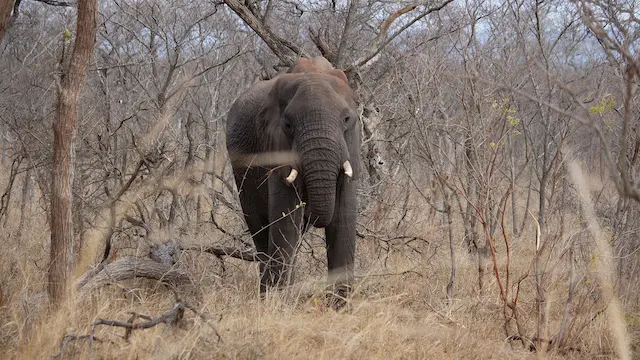

The African elephant, the largest land animal on Earth, is one of the most breathtaking creatures you can encounter in Kruger National Park. Their sheer size, intelligence, and strong social bonds make them a highlight of any safari experience. In this guide, we’ll explore where to see elephants in Kruger, how many live in the park, their behavior, and the best times to witness these majestic giants in the wild.
Kruger is home to one of the most stable and significant elephant populations in Africa. Recent estimates suggest there are over 20,000 African elephants roaming freely across the park’s vast 19,000+ km² of protected wilderness. Their population has recovered well from past threats like poaching and is now closely monitored through aerial surveys and conservation programs.
Elephants are highly mobile and can be seen throughout the park, but certain areas increase your odds of spectacular sightings — especially of large herds.
Most elephants prefer areas near permanent water sources and are especially visible in the dry months when water becomes scarce. Be sure to drive slowly, scan for fresh dung or tracks, and listen for breaking branches or distant trumpets.
Elephant sightings can be calm and peaceful — or dramatic. You might spot a solitary bull feeding silently under a marula tree, or a herd of 40 elephants crossing a dusty road in single file. Elephants often communicate with low-frequency rumbles and subtle trunk gestures, offering fascinating insight into their complex social dynamics.
Kruger elephants display a wide range of behaviors that are a treat to observe:
For safety, always maintain a respectful distance. Never rev your engine, block their path, or get out of your vehicle. While generally peaceful, elephants can be unpredictable — especially breeding herds or bulls in musth.
Elephant herds in Kruger are often multigenerational, with grandmothers, mothers, and calves traveling together. Calves are born after a 22-month gestation and are fiercely protected by the herd. It’s common to see females forming protective circles around babies if they feel threatened.
Want to improve your chances even further? Learn about seasonal weather patterns on our Kruger weather guide.
Seeing elephants in Kruger is a must for any wildlife enthusiast. Whether you’re doing a self-drive or joining one of our expertly guided trips, the experience will stay with you forever. Check out our Kruger National Park Safari Packages to get up close to elephants and the rest of the Big 5.
Elephants are more than just a highlight of Kruger — they are its heart. Their massive presence, social richness, and gentle intelligence define the essence of an African safari. Whether it's a lone bull by the river or a family herd crossing at sunset, an elephant sighting is always unforgettable.
Learn more about the lions of Kruger or explore the rest of the Big 5 mammals to plan your ultimate safari experience.